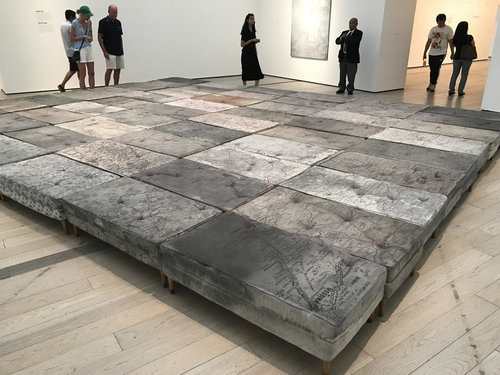Today I went to the Los Angeles County Museum of Art (also known as LACMA).
They have pieces from most of the eminent artists of the modern era.
Picasso? Check.
Rothko? Check.
Warhol? Check.
Matisse? Check.
It’s an impressive collection, and it brought back memories of my artistic glory days.
You probably don’t know this, but up through middle school I wanted to be a professional fine artist.
I was obsessed with drawing and painting. Originally, I really liked producing cartoonish stuff; but my work became more realistic and traditional over time. I did landscapes, portraits, figure drawings, still lifes, you name it.
Then, in high school, I did something that I regret to this day…
I started producing “modern art”.
Yes—conceptually driven pieces that mainly consisted of simple shapes and chaotic jumbles of color.
At the time I always told people that I was “more interested in the ideas than the artistic process”. But, in hindsight, I realize that I was just being lazy.
Slapping 20 or 30 layers of acrylic on a canvas in the shape of a circle is way easier than creating a perfectly proportioned (and shaded) face.
It wasn’t until I started studying behavioral science (social and evolutionary psychology in particular) that I realized that so many of our actions are done to gain points (status) in the social world.
This is why social media is so compelling. It’s a real-time score-card for how awesome we are.
And if quickly producing a series of circles and blobs of color provides you with just as much attention, praise, and status as something harder, it would be silly for your brain to NOT steer you in that direction.
So, slowly, I moved away from traditional fine art and into the world of “modern” art.
I became less Rubens and more Pollock.
As I walked through LACMA, I couldn’t stop asking the question: “Why would anyone produce traditional, skillful fine art anymore if they can get just as much praise (and just as much money) producing stuff like this?”
(Yes, these are ACTUAL pieces from the museum)
And, to be honest, I don’t know. If you look at the stuff coming out of art schools and lining popular galleries these days, it does seem like realism is on a steady decline.
But, as I’ve seen with my Instagram account, people are viscerally attracted to things that are realistic and show care and skill. Whenever I post a cartoony or abstract sketch it gets 1/2 to 1/3 as many ‘likes’ as my realistic charcoal pieces.
There’s something about representational art that people just find attractive.
Perhaps it’s because it feels familiar (there’s plenty of research showing how we prefer things we already recognize).
Perhaps it’s because we like knowing that humans are capable of such focus, patience, and craftsmanship.
Or perhaps it’s something baser: maybe we see art as some sort of mating resume (“Oh! She did that? She must be smart, conscientious, and creative.”).
No one really knows. What I do know is that while it’s more fun slapping paint on a canvas and calling it art, I feel a lot better when I stand back and look at the charcoal figure I just spent hours perfecting.
-Jason
PS: The first issue of my semi-weekly “Behavioral Science Roundup” is going out tomorrow.
If you want to get the first issue, which will contain the best new behavioral science research that’s come out in the last month, sign up today.
To receive this newsletter, you need to become one of my $10/month supporters on Patreon (which you can do here): https://www.patreon.com/bePatron?c=71757&rid=18689





